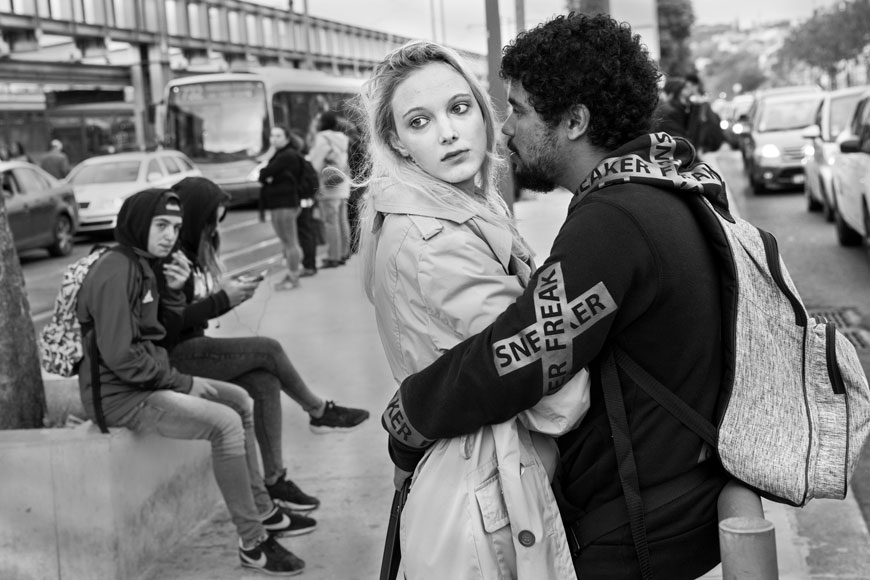Getting My Street Photographers To Work
Table of ContentsGetting The Street Photographers To WorkGetting The Street Photographers To Work8 Easy Facts About Street Photographers Described10 Easy Facts About Street Photographers ShownLittle Known Questions About Street Photographers.
Road professional photographers do not always have a social purpose in mind, yet they like to isolate and catch minutes which could otherwise go undetected.He was influenced by several of those that affected the street photographers of the 1950s and '60s, he was not mainly interested in capturing the spirit of the road. The impulse to visually document people in public started with 19th-century painters such as Edgar Degas, douard Manet, and Henri de Toulouse-Lautrec, that worked side by side with photographers attempting to record the significance of metropolitan life.
As a result of the comparatively primitive technology readily available to him and the long exposure time required, he struggled to capture the stress of the Paris roads. He experimented with a series of photo methods, attempting to locate one that would certainly enable him to record activity without a blur, and he discovered some success with the calotype, patented in 1841 by William Henry Fox Talbot. In comparison to Atget, photographer Charles Marville was worked with by the city of Paris to create an encyclopaedic document of Haussmann's city planning task as it unravelled, thus old and brand-new Paris. While the professional photographers' subject was basically the exact same, the results were considerably different, showing the impact of the digital photographer's intent on the personality of the pictures he generated.
About Street Photographers
Provided the great high quality of his photos and the breadth of material, architects and artists usually acquired Atget's prints to make use of as reference for their own job, though commercial passions were hardly his primary inspiration. Instead, he was driven to photo every last residue of the Paris he loved. The mingled enthusiasm and urgency of his objective luster through, resulting in photos that tell his very own experience of the city, qualities that expected road digital photography of the 20th century.

Unlike important link his peers, Brassa made use of a larger-format Voigtlnder video camera with a much longer direct exposure time, requiring him to be a lot more calculated and thoughtful in his method than he might have been if using a Leica.

Street Photographers Things To Know Before You Get This
It is since of this fundamental understanding of the art of photo taking that he is typically attributed with rediscovering the medium around once more approximately a century because its innovation. He took pictures for more than a half century and influenced generations of photographers to trust their eye and intuition in the minute.
These are the questions I will attempt to answer: And after that I'll leave you with my own interpretation of road digital photography. Yes, we do. Allow's start with defining what an interpretation is: According to it is: "The act of defining, or of making something guaranteed, unique, or clear".
No, certainly not. The term is both limiting and misleading. Seems like a road digital photography ought to be pictures of a streets appropriate?! And all road photographers, besides a handful of absolute newbies, will fully value that a road is not the key part to street digital photography, and really if it's a photo of a street with possibly a few monotonous individuals doing nothing of rate of interest, that's not street digital photography that's a picture of a road.
The Of Street Photographers
He makes a legitimate factor don't you think? Nevertheless, while I concur with him I'm uncertain "candid public digital photography" will catch on (although I do kind of like the term "candid photography") due to the fact that "street photography" has been around for a long Bonuses period of time, with several masters' names connected to it, so I think the term is right here to stay.
Inside?! I hear you yell as you tremble your fist to the skies. Why not? You can contend the beach, at an event, in an alley, in a park, in a piazza, in a cafe, at a museum or art gallery, in a metro station, at an occasion, on a bridge, under a bridge ...
Yes, I'm terrified we have no choice! Without click for source guidelines we can not have a meaning, and without a definition we do not have a style, and without a style we do not have anything to specify what we do, therefore we are embeded a "rules interpretation style" loophole! And no-one intends to obtain embeded a loophole. - Street Photographers
